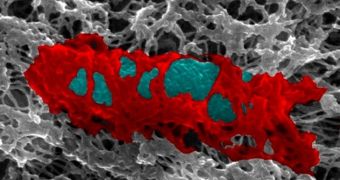A new study by researchers at the Pasteur Institute, in Paris, shows that cellular proteins called septins play an important role in helping the human body deal with the consequences of bacterial infections.
The molecules are known to be involved in a host of cellular processes, such as for example providing structural support during cellular division and cornering off parts of cells when the need arises.
But the new investigation also determined that these proteins construct a series of walls around invading bacterial cells, preventing them from infection other cells. “This is a new way for cells to control an infection,” PI cell biologist Pascale Cossart explains.
The material trapped inside the septin cages is destroyed during autophagy, a stage in the cellular life cycle that takes care of any residues resulting from previous cellular processes, Nature reports.

 14 DAY TRIAL //
14 DAY TRIAL //